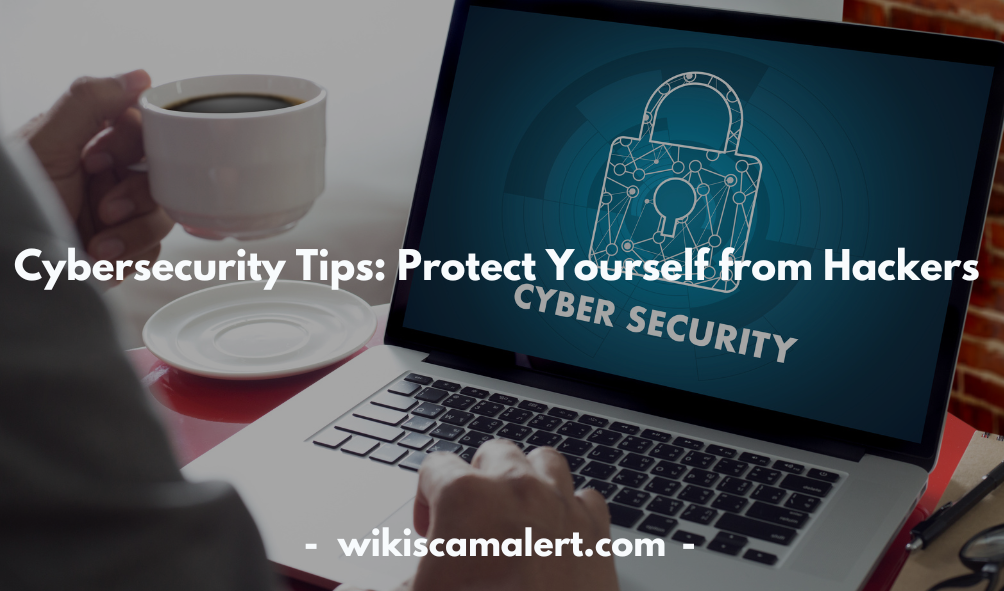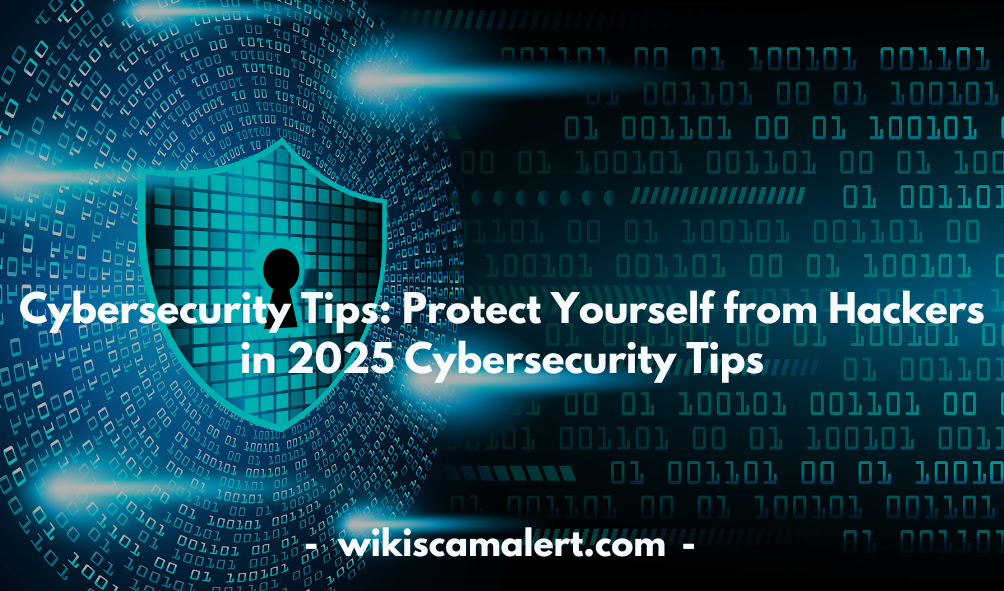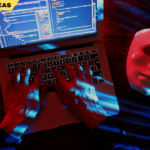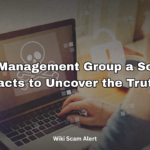The internet is a wonderful place, but it can also be dangerous if you’re not careful. Hackers, scammers, and cybercriminals are constantly finding new ways to steal data, infect devices, and exploit vulnerabilities. That’s why following essential cybersecurity tips is crucial to keeping yourself and your information safe online.
In this guide, we’ll cover everything from basic online security practices to advanced techniques for small businesses and holiday cybersecurity safety. Let’s dive in!

Cybersecurity Basics
Cybersecurity refers to the practice of protecting digital devices, networks, and data from cyber threats such as hacking, phishing, malware, and identity theft. As technology advances, cybercriminals are developing more sophisticated attacks, making cybersecurity essential for individuals and businesses alike.
Key Cybersecurity Concepts
- Authentication & Authorization – Verifying user identity before granting access to sensitive information.
- Encryption – Encoding data to prevent unauthorized access.
- Firewalls & Antivirus Software – Protecting systems from cyber threats.
- Regular Software Updates – Keeping software patched against vulnerabilities.
Common Cyber Threats
● Phishing Attacks – Deceptive emails or messages tricking users into sharing personal information.
● Ransomware – Malicious software that locks files until a ransom is paid.
● Data Breaches – Unauthorized access to sensitive personal or business data.
● Social Engineering – Manipulating people into revealing confidential information.
To stay safe, individuals and businesses must implement strong cybersecurity measures, educate themselves on threats, and remain vigilant against cyber risks.
Online Privacy Protection
Your online privacy is constantly at risk due to data tracking, targeted ads, social media exposure, and potential cyberattacks. Protecting your online privacy means safeguarding personal data from unauthorized access.
Steps to Protect Your Online Privacy
- Use Secure Browsers – Opt for privacy-focused browsers like Brave, Firefox, or DuckDuckGo.
- Adjust Privacy Settings – Limit data sharing on social media platforms and online accounts.
- Enable Private Browsing Modes – Use incognito or private browsing modes to reduce tracking.
- Use a Virtual Private Network (VPN) – Encrypt your internet connection to prevent data snooping.
- Be Wary of Free Services – “If it’s free, you’re the product.” Free apps and websites often sell user data.
Avoiding Online Tracking
● Block third-party cookies and trackers.
● Regularly clear browsing history and cookies.
● Use encrypted messaging apps like Signal or WhatsApp.
Taking control of your online privacy ensures that your personal data stays secure, reducing the risk of identity theft, scams, and surveillance.
Password Security Best Practices
Passwords are the first line of defense against unauthorized access to your online accounts. Weak or reused passwords make it easy for hackers to breach your accounts.
How to Create Strong Passwords
- Use Long & Complex Passwords – At least 12-16 characters with a mix of uppercase, lowercase, numbers, and symbols.
- Avoid Common Passwords – Never use predictable passwords like “123456,” “password,” or “qwerty.”
- Use Passphrases – Create unique phrases that are easy to remember but hard to guess (e.g., “BlueSky@Mountain$2025”).
Best Practices for Managing Passwords
● Use a Password Manager – Store and generate strong passwords securely.
● Enable Multi-Factor Authentication (MFA) – Adds an extra layer of security.
● Don’t Reuse Passwords – Every account should have a unique password.
● Change Passwords Regularly – Update passwords every few months, especially for sensitive accounts.
Weak passwords are one of the main causes of data breaches. Following strong password security practices helps keep hackers at bay.
Phishing Attack Prevention
Phishing attacks are one of the most common cybersecurity threats, tricking people into revealing sensitive information like passwords, credit card details, or personal data.
How Phishing Works
- Fake Emails & Websites – Cybercriminals send emails that look like official messages from banks, social media, or work accounts.
- Malicious Links & Attachments – Clicking on links or opening attachments can install malware or steal login credentials.
- Urgent Requests – Phishing messages create urgency, pressuring victims to act quickly.
How to Spot & Avoid Phishing Scams
● Check the Sender’s Email – Legitimate organizations don’t send emails from generic domains like “gmail.com” or “yahoo.com.”
● Look for Spelling & Grammar Mistakes – Many phishing emails contain typos or awkward wording.
● Hover Over Links Before Clicking – Check if the URL leads to an official site or a suspicious domain.
● Don’t Download Suspicious Attachments – If you weren’t expecting an attachment, verify with the sender before opening it.
● Verify Directly with Companies – If an email asks you to take action (e.g., reset your password), visit the official website instead of clicking links.
Phishing attacks rely on human error. Staying alert and skeptical can prevent you from falling victim to these scams.
Ransomware and Malware Defense
Ransomware and malware are malicious programs designed to damage or take control of your system. Ransomware locks files and demands payment, while malware can steal data, spy on activities, or slow down your device.
How Ransomware & Malware Infect Devices
● Malicious Email Attachments & Links – Clicking on infected links downloads harmful software.
● Compromised Websites – Visiting hacked sites can automatically install malware.
● Fake Software Downloads – Downloading cracked software, unofficial apps, or unverified files may contain malware.
● Outdated Software & Security Vulnerabilities – Hackers exploit software flaws to spread malware.
How to Protect Yourself from Ransomware & Malware
- Install & Update Antivirus Software – Use trusted antivirus programs to detect and remove threats.
- Keep Software & Operating Systems Updated – Regular updates patch security vulnerabilities.
- Enable Firewalls – Blocks unauthorized access to your device.
- Avoid Clicking Suspicious Links or Ads – Pop-ups and ads can carry hidden malware.
- Use Strong Email Filtering – Email security tools can help block malware-infected messages.
- Regularly Back Up Important Files – In case of a ransomware attack, having backups ensures you don’t lose data.
- Disconnect from the Internet if Infected – If you suspect an attack, disconnect immediately to prevent further damage.
Cybercriminals use ransomware and malware to target individuals and businesses. Being proactive with cybersecurity measures can protect your data and devices.
Secure Online Transactions
With online shopping, banking, and digital payments becoming the norm, ensuring secure online transactions is crucial to protecting your financial data from hackers, fraudsters, and cybercriminals.
Common Threats to Online Transactions
- Phishing Scams – Fake websites and emails tricking users into providing credit card details.
- Man-in-the-Middle Attacks – Hackers intercept data between the user and the website.
- Card Skimming & Credential Theft – Malware that steals payment details.
- Fake E-commerce Websites – Fraudulent stores that steal money without delivering products.
Best Practices for Safe Online Transactions
- Use Secure Websites – Always check for HTTPS and a padlock icon in the URL bar before entering payment information.
- Enable Two-Factor Authentication (2FA) – Adds extra protection to your payment accounts.
- Use Virtual Credit Cards – Many banks offer temporary virtual cards for safer online purchases.
- Avoid Public Wi-Fi for Transactions – Public networks are vulnerable to cyberattacks.
- Verify the Website’s Legitimacy – Look for real customer reviews and check for unusual domain names.
- Monitor Bank Statements Regularly – Detect unauthorized transactions early.
- Set Up Transaction Alerts – Banks can send SMS or email notifications for every purchase.
By following these precautions, you can significantly reduce the risks associated with online payments and enjoy a secure digital shopping experience.
Two-Factor Authentication (2FA) Guide
Two-Factor Authentication (2FA) is an additional layer of security that requires users to verify their identity through a second step, making it much harder for hackers to gain access to accounts.
Why is 2FA Important?
- Protects Against Password Theft – Even if hackers steal your password, they won’t be able to log in without the second factor.
- Prevents Unauthorized Account Access – Cybercriminals can’t access accounts without your secondary authentication.
- Reduces the Risk of Identity Theft – Safeguards personal and financial data.
Types of Two-Factor Authentication
● SMS Verification – A one-time password (OTP) is sent to your mobile number.
● Authenticator Apps – Apps like Google Authenticator or Authy generate secure codes.
● Biometric Authentication – Fingerprint, facial recognition, or voice verification.
● Security Keys – Physical USB keys like YubiKey for strong authentication.
How to Enable 2FA on Popular Platforms
● Google & Gmail – Go to account settings, select “Security,” and enable 2FA.
● Facebook & Instagram – Enable 2FA in “Security & Login” settings.
● Online Banking – Most banks offer 2FA options in security settings.
● E-commerce Platforms – Enable 2FA on Amazon, PayPal, and other payment services.
Enabling 2FA on your important accounts can significantly boost security and prevent unauthorized access.
Safe Browsing Practices
The internet is filled with security risks, from malicious websites to spyware. Practicing safe browsing helps protect your data and devices from cyber threats.
Common Online Threats
- Malware & Spyware – Malicious software that infects devices through unsafe websites.
- Fake Websites & Phishing Links – Fraudulent sites tricking users into providing sensitive information.
- Clickjacking & Drive-By Downloads – Malicious scripts that install viruses without your knowledge.
How to Browse the Internet Safely
- Use Secure & Reputable Websites – Only visit HTTPS-enabled sites with valid SSL certificates.
- Avoid Clicking on Suspicious Ads & Pop-Ups – Many contain hidden malware.
- Use an Ad Blocker & Anti-Tracking Extensions – Stops malicious ads from appearing.
- Regularly Clear Browsing Data & Cookies – Prevents tracking and potential security risks.
- Check Website URLs Carefully – Hackers create fake websites with similar domain names.
- Enable Safe Browsing Mode – Many browsers like Chrome and Firefox have built-in protections.
- Update Your Browser Regularly – Outdated browsers have security vulnerabilities.
By following these browsing habits, you can minimize risks and ensure a safer online experience.
Public Wi-Fi Security
Public Wi-Fi is convenient but highly insecure. Hackers can exploit open networks to steal sensitive information, install malware, or launch attacks.
Risks of Using Public Wi-Fi
- Man-in-the-Middle Attacks (MITM) – Cybercriminals intercept data transmitted over unsecured networks.
- Fake Wi-Fi Hotspots – Hackers create rogue networks that appear legitimate but steal your data.
- Packet Sniffing – Attackers capture unencrypted data to steal login credentials.
- Session Hijacking – Hackers gain control of active online sessions.
How to Stay Safe on Public Wi-Fi
- Avoid Logging into Sensitive Accounts – Don’t access banking, email, or social media accounts on public networks.
- Use a VPN – Encrypts internet traffic, preventing hackers from intercepting data.
- Forget the Network After Use – Prevents automatic reconnection to unsafe networks.
- Turn Off Wi-Fi When Not in Use – Stops your device from automatically connecting to open networks.
- Use Mobile Data Instead – A cellular connection is safer than public Wi-Fi.
- Enable Firewall & Disable File Sharing – Prevents unauthorized access to your device.
Public Wi-Fi should only be used for basic browsing. If you must access important accounts, always use a VPN for added security.
Social Media Security Tips
Social media is a popular target for hackers, scammers, and identity thieves. Protecting your social media accounts is essential to safeguard your personal information.
Common Social Media Threats
- Hacked Accounts & Identity Theft – Cybercriminals take over accounts to impersonate victims.
- Phishing Scams – Fake messages trick users into providing login details.
- Over-Sharing Personal Information – Posting too much personal data increases the risk of scams.
- Fake Profiles & Friend Requests – Fraudulent accounts steal information or spread malware.
Best Practices for Social Media Security
- Use Strong, Unique Passwords – Don’t reuse passwords across platforms.
- Enable Two-Factor Authentication (2FA) – Adds an extra security layer.
- Limit Personal Information in Profiles – Avoid sharing your phone number, email, or location.
- Review Privacy Settings Regularly – Control who can see your posts and profile information.
- Be Wary of Suspicious Links & Messages – Hackers often send malicious links via direct messages.
- Disable Location Sharing – Prevents tracking of your real-time location.
- Log Out of Public & Shared Devices – Always log out to prevent unauthorized access.
How to Recover a Hacked Social Media Account
- Reset Your Password Immediately – Use a strong, new password.
- Check Account Activity & Sessions – Log out from unknown devices.
- Report the Breach to the Platform – Contact Facebook, Instagram, Twitter, or the respective service.
- Enable Additional Security Measures – Activate 2FA and review linked apps or devices.
With billions of users on social media, cybercriminals are always looking for easy targets. Staying cautious and proactive about security helps prevent social media threats.
Cybersecurity for Small Businesses
Small businesses are prime targets for cyberattacks due to weaker security measures compared to large corporations. A single breach can lead to financial losses, data theft, and reputational damage. Implementing robust cybersecurity for small businesses is essential to protect sensitive business and customer information.
Common Cyber Threats Facing Small Businesses
- Phishing Attacks – Hackers use fake emails to trick employees into revealing credentials.
- Ransomware – Malicious software locks business data until a ransom is paid.
- Data Breaches – Cybercriminals steal sensitive customer and financial data.
- Insider Threats – Employees (intentional or unintentional) compromise business security.
- Malware & Viruses – Malicious programs infect company devices, leading to data loss.
Essential Cybersecurity Practices for Small Businesses
- Train Employees on Cybersecurity Awareness
○ Conduct regular security training.
○ Teach employees to identify phishing emails and suspicious links.
- Use Strong Password Policies & Multi-Factor Authentication (MFA)
○ Require complex passwords for all accounts.
○ Enable MFA for logins to add extra security.
- Secure Business Networks
○ Use firewalls and updated antivirus software.
○ Encrypt Wi-Fi networks with WPA3 security.
- Regularly Update Software & Systems
○ Keep operating systems, apps, and security software up to date.
○ Patch vulnerabilities before hackers exploit them.
- Limit Employee Access to Sensitive Data
○ Follow the principle of least privilege (PoLP).
○ Restrict admin access to only essential personnel.
- Use Secure Payment Systems
○ Only use PCI-compliant payment processors.
○ Monitor transactions for suspicious activities.
- Backup Data Frequently
○ Store backups securely in the cloud or external drives.
○ Implement automated daily backups.
By following these cybersecurity tips, small businesses can significantly reduce the risk of cyber threats and protect their valuable assets.
Holiday Cybersecurity Tips
The holiday season is a peak time for cybercrime, with hackers targeting online shoppers, businesses, and financial transactions. Staying vigilant with holiday cybersecurity tips helps prevent fraud, scams, and data theft.
Common Holiday Cybersecurity Threats
- Fake Shopping Websites & Deals – Scammers create fraudulent sites offering too-good-to-be-true discounts.
- Phishing Emails & SMS Scams – Fake order confirmations and shipping notifications trick users into clicking malicious links.
- Charity Scams – Fraudulent charities trick people into donating money to scammers.
- Identity Theft & Payment Fraud – Cybercriminals steal personal and financial details for fraudulent transactions.
How to Stay Safe During the Holidays
- Shop Only on Trusted Websites
○ Use reputable online retailers.
○ Verify website security (look for HTTPS and a padlock icon).
- Beware of Phishing Emails & Messages
○ Avoid clicking on unexpected emails or links.
○ Check for misspellings and suspicious sender addresses.
- Use Secure Payment Methods
○ Prefer credit cards over debit cards for better fraud protection.
○ Use virtual credit cards or digital wallets (PayPal, Apple Pay).
- Enable Multi-Factor Authentication (MFA)
○ Adds an extra layer of protection to accounts.
- Monitor Bank Statements & Set Alerts
○ Regularly review transactions for unauthorized charges.
- Avoid Public Wi-Fi for Online Shopping
○ Use a VPN if shopping on an unsecured network.
- Verify Charities Before Donating
○ Check official websites and ratings before donating to a cause.
These precautions can help ensure a safe and scam-free holiday season online.
Protecting Personal and Financial Information
With cybercrime on the rise, protecting personal and financial information is more critical than ever. Identity theft, data breaches, and financial fraud can have devastating consequences.
How Cybercriminals Steal Personal & Financial Data
- Phishing Scams – Emails and messages trick users into providing sensitive details.
- Data Breaches – Hackers gain access to unsecured databases containing user information.
- Malware & Spyware – Malicious software records keystrokes and steals credentials.
- Public Wi-Fi Attacks – Unsecured networks expose personal data to hackers.
Steps to Protect Your Information
- Use Strong, Unique Passwords
○ Avoid using the same password for multiple accounts.
○ Use a password manager to store credentials securely.
- Enable Two-Factor Authentication (2FA)
○ Adds an extra layer of protection to bank and social media accounts.
- Monitor Financial Accounts Regularly
○ Check bank statements for fraudulent transactions.
- Shred Personal Documents Before Disposal
○ Prevents dumpster diving identity theft.
- Use Secure Networks & VPNs
○ Avoid entering personal details on public Wi-Fi.
- Be Cautious with Social Media Sharing
○ Cybercriminals can use shared information for social engineering scams.
Following these steps will help safeguard your identity and finances from cyber threats.
Secure Cloud Storage Practices
Cloud storage is convenient, but without proper security, your data could be vulnerable to cyberattacks. Implementing secure cloud storage practices is essential for protecting personal and business information.
Cloud Storage Security Risks
- Unauthorized Access – Hackers can break into poorly secured cloud accounts.
- Data Breaches – Weak encryption or misconfigurations lead to leaks.
- Malware & Ransomware Attacks – Hackers encrypt or delete cloud data for ransom.
Best Practices for Securing Cloud Storage
- Use Strong Passwords & 2FA
○ Always enable multi-factor authentication (MFA) for cloud accounts.
- Encrypt Sensitive Files Before Uploading
○ Use end-to-end encryption tools to protect data.
- Restrict Access & Permissions
○ Only grant necessary permissions to users and employees.
- Enable Automatic Cloud Backups
○ Ensure important files are backed up regularly.
- Monitor Account Activity
○ Keep an eye on login attempts and access logs.
- Choose a Reputable Cloud Service Provider
○ Opt for trusted services like Google Drive, Dropbox, or OneDrive with strong security measures.
By following these guidelines, users and businesses can ensure safer cloud storage and prevent data loss.
Data Backup and Recovery Strategies
Backing up data is crucial to prevent permanent loss due to cyberattacks, hardware failures, or accidental deletions. A solid data backup and recovery strategy ensures business continuity and personal data security.
Why Data Backup is Important
● Protects against ransomware – If attacked, you can restore data without paying hackers.
● Prevents data loss – Hardware failures, accidents, or cyber incidents won’t wipe out critical files.
● Ensures business continuity – Businesses can recover quickly after a cyberattack or system failure.
Best Practices for Data Backup
- Follow the 3-2-1 Backup Rule
○ Keep 3 copies of your data.
○ Store 2 copies on different devices (external drives, computers).
○ Keep 1 copy offsite or in the cloud for disaster recovery.
- Use Cloud & Local Backups
○ Store backups both online (cloud) and offline (external hard drives).
- Automate Backups
○ Schedule daily or weekly automated backups to prevent data loss.
- Encrypt Backups for Security
○ Protects sensitive information from unauthorized access.
- Regularly Test Data Restoration
○ Ensure that backups are functional by periodically restoring files.
A strong data backup strategy protects against cyber threats, system failures, and unexpected disasters.
Work-from-Home Cybersecurity Tips
Remote work has become the norm, but it also introduces new cybersecurity risks. Without the protection of corporate networks, employees working from home become prime targets for cybercriminals. Implementing strong work-from-home cybersecurity tips is essential to safeguard personal and company data.
Common Cybersecurity Risks for Remote Workers
- Unsecured Home Networks – Weak Wi-Fi passwords make it easy for hackers to gain access.
- Phishing Attacks – Cybercriminals send fake emails to trick employees into sharing sensitive information.
- Use of Personal Devices for Work – Laptops and smartphones without security updates are vulnerable to malware.
- Weak Passwords & Lack of Multi-Factor Authentication (MFA) – Easy-to-guess passwords put sensitive data at risk.
- Data Leakage via Cloud Storage & File Sharing Apps – Misconfigured access settings can lead to data exposure.
Essential Cybersecurity Tips for Remote Workers
- Secure Your Home Wi-Fi Network
○ Use a strong, unique password for your router.
○ Enable WPA3 encryption for better security.
○ Regularly update router firmware to fix vulnerabilities.
- Use a Virtual Private Network (VPN)
○ Encrypts internet traffic, keeping data safe from hackers.
○ Prevents cybercriminals from spying on sensitive work communications.
- Enable Multi-Factor Authentication (MFA)
○ Adds an extra layer of protection to work emails and accounts.
○ Prevents hackers from logging in even if they steal passwords.
- Be Cautious with Phishing Emails
○ Avoid clicking on links or downloading attachments from unknown senders.
○ Verify sender identities before sharing sensitive information.
- Keep Work Devices Updated
○ Regularly install security patches and updates for your laptop, phone, and apps.
○ Use endpoint security solutions to detect and prevent malware.
- Separate Work & Personal Devices
○ Avoid using personal devices for work to minimize security risks.
○ If using a personal laptop, install enterprise-grade antivirus software.
- Lock Your Devices When Not in Use
○ Prevents unauthorized access in shared living spaces.
○ Enable auto-lock screens and use strong passcodes.
Following these work-from-home cybersecurity tips will help remote employees stay safe from cyber threats.
Mobile Device Security
Smartphones and tablets have become essential for work, banking, and communication, but they are also prime targets for cybercriminals. Strong mobile device security ensures that personal and financial information stays safe.
Top Cyber Threats for Mobile Devices
- Malware & Spyware – Apps infected with malicious software steal personal data.
- Phishing Attacks – Fake SMS messages trick users into clicking malicious links.
- Unsecured Public Wi-Fi Risks – Hackers can intercept sensitive data on open networks.
- Lost or Stolen Devices – Without proper security, thieves can access personal files.
- Outdated Software & Apps – Vulnerabilities in old software make hacking easier.
Best Mobile Security Practices
- Use Strong Passcodes & Biometrics
○ Set up a 6-digit PIN, fingerprint, or facial recognition.
○ Avoid using easy-to-guess passcodes like “123456” or “password”.
- Keep Your Device Updated
○ Install the latest iOS or Android security updates to patch vulnerabilities.
- Avoid Downloading Unknown Apps
○ Only install apps from the Google Play Store or Apple App Store.
○ Check app permissions before installation.
- Enable Remote Lock & Wipe Features
○ Use Find My iPhone (Apple) or Find My Device (Android) to track lost devices.
○ Remotely erase data if your phone is stolen.
- Use a VPN on Public Wi-Fi
○ Encrypts internet traffic to prevent hackers from intercepting data.
- Beware of Smishing (SMS Phishing)
○ Do not click on suspicious links sent via text messages.
- Install Mobile Security Apps
○ Use antivirus apps like Norton or Bitdefender for extra protection.
Taking these steps will keep your mobile device secure from hackers and data theft.
AI and Machine Learning in Cybersecurity
Artificial Intelligence (AI) and Machine Learning (ML) are revolutionizing cybersecurity by improving threat detection and prevention. These technologies help identify and respond to cyber threats faster than traditional security methods.
How AI & ML Improve Cybersecurity
- Advanced Threat Detection – AI analyzes vast amounts of data to spot patterns and anomalies in real-time.
- Automated Incident Response – AI-powered systems can quickly block cyberattacks before they cause damage.
- Fraud Prevention – Banks and online platforms use AI to detect suspicious transactions.
- Improved Phishing Detection – AI scans emails and messages to identify phishing attempts.
Challenges of AI in Cybersecurity
● False Positives – AI may sometimes block legitimate activity.
● Adversarial AI Attacks – Hackers can trick AI systems into misidentifying threats.
● High Implementation Costs – Advanced AI security solutions can be expensive.
Despite these challenges, AI and machine learning play a crucial role in modern cybersecurity defense.
Future Cybersecurity Threats
As technology evolves, cyber threats are becoming more sophisticated. Businesses and individuals must prepare for the future of cybersecurity to stay ahead of hackers.
Top Emerging Cybersecurity Threats
- AI-Powered Cyberattacks
○ Hackers use AI to create more advanced malware and phishing scams.
- Quantum Computing Threats
○ Quantum computers could break current encryption methods, making sensitive data vulnerable.
- Deepfake Cybercrimes
○ AI-generated deepfake videos and audio can be used for fraud and misinformation.
- 5G Security Risks
○ The expansion of 5G networks increases the number of connected devices, leading to more attack opportunities.
- Cloud Security Vulnerabilities
○ More companies are moving data to the cloud, but misconfigurations can lead to major data breaches.
To combat these threats, organizations must invest in AI-driven security, blockchain technology, and post-quantum cryptography.
Cybersecurity Awareness and Education
Cybersecurity isn’t just for IT professionals—everyone needs to be educated on online threats. A lack of cybersecurity awareness increases the risk of scams, identity theft, and financial losses.
Why Cybersecurity Education Matters
● Prevents Human Errors – Many cyberattacks succeed due to employee mistakes (e.g., clicking on phishing links).
● Reduces Business Risks – Well-trained employees can detect and prevent cyber threats.
● Empowers Individuals – The more people know about cybersecurity, the harder it is for hackers to succeed.
How to Improve Cybersecurity Awareness
- Take Online Cybersecurity Courses
○ Platforms like Coursera, Udemy, and Cybrary offer security training.
- Practice Cyber Hygiene Daily
○ Use strong passwords, enable MFA, and update devices regularly.
- Educate Employees & Family Members
○ Conduct security awareness training in the workplace and at home.
- Stay Updated on Cyber Threats
○ Follow cybersecurity blogs and news sources like Krebs on Security.
- Participate in Cybersecurity Drills
○ Simulated attacks help businesses test their response strategies.
A cyber-aware society is the best defense against cybercrime. Everyone must take responsibility for their own security.
Cybersecurity Tips for Small Businesses
Importance of Cybersecurity for Small Businesses
Small businesses are frequent targets for cybercriminals because they often lack robust security measures.
Best Practices for Protecting Business Data
● Secure sensitive data with encryption
● Limit employee access to critical files
● Implement strong authentication measures
Educating Employees on Security Protocols
Train employees to recognize phishing emails, avoid unsafe downloads, and follow security best practices.
Holiday Cybersecurity Tips to Stay Safe Online
Shopping Securely During the Holiday Season
Only shop from reputable websites with secure payment options (look for HTTPS in the URL).
Recognizing Fake Websites and Scams
Avoid deals that seem too good to be true and verify website authenticity before entering personal details.
Protecting Personal and Financial Information
Monitor your bank statements and use credit cards instead of debit cards for added security.
The Future of Cybersecurity – What Lies Ahead?
Emerging Cyber Threats
Cybercriminals are using AI and automation to launch more advanced attacks.
AI & Machine Learning in Cybersecurity
AI is being used to detect threats faster and predict cyberattacks before they happen.
Steps You Can Take to Stay Ahead
Stay informed about the latest cybersecurity trends and continue practicing strong online security habits.
Conclusion
Cybersecurity is not a one-time effort—it’s an ongoing process. By following these cybersecurity tips, you can protect your data, devices, and digital identity. Stay alert, stay informed, and always prioritize your online security. Check out 100 ways to stay safe online for more essential tips.
FAQs
1. What are the top three cybersecurity tips for beginners?
Use strong passwords, enable two-factor authentication, and be cautious with links and emails.
2. How can small businesses improve cybersecurity on a budget?
Start with employee training, use free security tools, and implement basic security measures like strong passwords and software updates.
3. Why is two-factor authentication important?
It adds an extra layer of security, making it harder for hackers to access your accounts.
4. How do I recognize a phishing attack?
Look for suspicious email addresses, grammatical errors, and urgent requests for personal information.
5. What’s the best way to protect my personal data online?
Use strong passwords, avoid sharing sensitive information, and enable security features on all your accounts.










